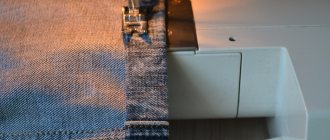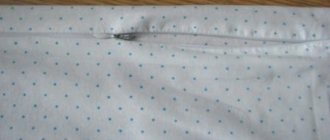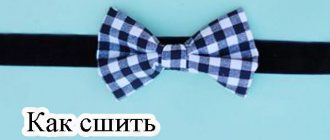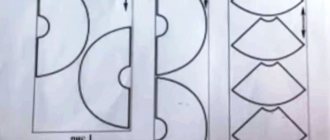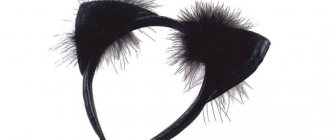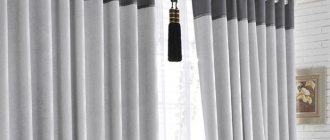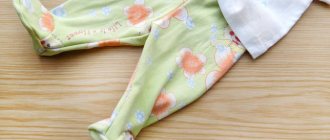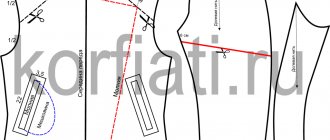A backpack is the most convenient and practical thing. It’s good to have a bag in your wardrobe in which you can carry sportswear to the gym, food on nature, or just school supplies. To do this, you don’t have to spend a lot of money on buying a backpack, because you can sew it yourself.
To learn how to sew a backpack with your own hands, study this article.
Backpack Materials
If you decide to sew a backpack yourself, you should prepare the following materials:
- fabric (you can buy/use an old unnecessary thing);
- scissors, centimeter;
- needle and thread;
- buttons or lock.
Lessons on modern needlework, many instructions and diagrams can be found here: https://dnevnikmastera.ru/
The remaining tools are selected depending on the complexity of the selected product model.
The evolution of the backpack in the twentieth century
The emergence of new materials and technologies gave a powerful impetus to the further design of backpacks. So, in 1938, the American mountain ranger J. Cunningham equipped his backpack with a zipper, which made it possible to more efficiently redistribute the weight load by changing the shape of the bag. The invention turned out to be so successful that a few years later Cunningham opened his own enterprise for sewing backpacks and other travel equipment.
In 1951, an important invention was made: Californian D. Kelty introduced a waist belt into the design. The idea came to him by accident: one day, when putting on a backpack, the legs of the metal frame ended up in the back pockets of the inventor’s hiking trousers. After only a few steps, Kelty realized how much easier it was to carry his heavily loaded backpack. It should be said that the Californian tourist had at his disposal an old model with a wooden frame, so the next step was to replace the frame with a lightweight structure made of aluminum tubes.
Dick Kelty also came up with the idea of replacing heavy tarpaulin with lightweight, durable nylon. The fact is that he usually purchased travel equipment at sales of old military equipment. One day he was offered to buy parachute nylon, which had remained in army warehouses since the Second World War. It turned out that nylon is the best suited for sewing tourist backpacks.
In 1952, the Keltys opened their own company, launching the new products invented by Dick into production. Their backpacks were used by famous travelers and climbers. And 11 years later, in 1963, a team of climbers Norman Direnfoot and Jim Whittaker conquered Everest with backpacks manufactured by the Kelty spouses, their products became famous throughout the continent, and then in Europe. Modern models are still created based on ideas belonging to Dick Kelty.
How to sew a backpack correctly?
First you need to cut out two identical pieces of fabric - this is the basis of the product. If desired, an additional lining is sewn into the inside of the backpack.
When sewing two pieces together, you need to leave slits on the sides, into which the straps will then be inserted.
The color of the lining should be combined with the color scheme of the entire product. Laces or straps are used as ties. Depends on preference.
To thread the cord, fold the top of the backpack and sew. If the cord is thin, use a pin to help guide the cord through the hole. All that remains is to sew on the straps and the product is ready.
What a Stone Age backpack looked like
The main material for the prehistoric backpack was animal skins, which, of course, could not survive even partially for many thousands of years. It can be assumed that at first, a simple leather bag with cords and straps attached to it for more or less secure fastening to the back was used to carry property. Such a bag made it possible to carry simple property, a supply of food or hunting spoils, and at the same time the hands remained free so that a person could hold a weapon, repelling attacks from enemies and wild animals.
An accident that happened to a certain resident of the Tyrolean Alps more than 5,000 years ago helped historians find out what the ancestor of the modern backpack looked like. On the Alpine glacier Similawn, a married couple of German tourists in 1991 discovered a traveler frozen in the ice and called rescuers. Thanks to the mountain ice, the body of the man who received the name Ötzi was perfectly preserved, and archaeologists had a unique chance to study his clothing and household items.
Among other things, the man had a kind of backpack on his back, which was a thin frame made of hazel branches, fastened at the bottom with transverse slats. A capacious bag made of skins with sewn leather straps was attached to the frame using ties. The frame made it possible to distribute the weight of the load across the entire back and travel with it for a long time without feeling any discomfort. It is interesting that this design has safely survived to this day almost unchanged. The inhabitants of the Alps still use shoulder bags on a wooden frame, calling them “kraxe”.
reconstruction of Ötzi's backpack
Similar products were in use among many peoples of Europe, Asia and both Americas. Thus, the Norwegians, until the beginning of the twentieth century, used the “hjuringsmei,” a shoulder bag that consisted of the same elements as Ötzi’s knapsack.
Norwegian Sekk med Meis
The only difference was in more accurate workmanship: the wooden elements were made of planed wood, and the bag was made of dressed leather. Instead of a bag, a wooden bucket could be attached to the frame.
Korean shoulder bags on a wooden frame were called “jige”; references to them are found in literary sources starting from the 17th century. As for the American continent, it is reliably known about the devices for carrying cargo adopted by the Aztecs. They were called "cacaxtli" and consisted of a wooden board with a wide belt. The weight was attached to the board and picked up from below with a belt, and the upper part of the belt loop was put on the forehead. This method of carrying cargo is still used by some tribes living in the jungle.
Pattern for a backpack
If you are taking on sewing for the first time, it is better to use a pattern. It will help you sew the desired product correctly.
To create backpack patterns with your own hands, purchase special graph paper. Place all the parts of the backpack on it, leaving space for the seams.
DIY tennis skirt: create a pleated skirt with your own handsThe latest running accessories
- How to dry clothes at home?
Place the cut out parts on the fabric and trace the outlines. Secure with bobby pins so that the paper does not move and cut out. And then it’s all a matter of needle and thread.
What are travel backpacks made of?
So, let's start in order, from which fabric is better to choose a backpack. As you understand, the fabric for a backpack should first of all be durable. If the fabric is weak, it may fall apart from hard, sharp objects in the backpack, or scuff on the ground (asphalt). The best fabrics for backpacks are Cordura and Oxford. Cordura is the thickest and heaviest material, but it is also the most durable. It is almost impossible to tear such fabric. But Cordura can be different, in any case, next to this word there should be numbers that indicate the density of the material, for example, Cordura 700. The higher the number, the stronger the material, but the backpack will also weigh more. If you plan to engage in tourism seriously and for a long time, then it is better to choose a backpack made of this fabric, and so that the number is larger, somewhere around 500. The maximum is 1000, but these are already bags-covers for all sorts of heavy loads.
But choosing a backpack made entirely of this fabric is not the best option. The lower part of the backpack should really be very strong, but the top does not experience heavy loads, and it is advisable that the head of the backpack and some other parts be made of thinner and, accordingly, lighter fabric, because you also have to carry the weight of the backpack on yourself. Not all backpack manufacturers make Cordura fabric - this fabric is expensive and difficult to process. If there is no Cordura® tag on the backpack, then this is not a branded fabric, although it can also be of high quality.
Oxford fabric is lighter, softer and cheaper, but is also very good for sewing backpacks. Of course, I mean real branded fabric, not Chinese fakes. If you don't plan to carry heavy weights on month-long trips, a backpack made of Oxford fabric will be a good choice. Moreover, it is easier to choose a backpack - most models are made from this fabric. It’s even better if you can choose a backpack not just made of Oxford fabric, but one with checkered (or diamond-patterned) fabric, it’s called RipStop. This fabric is reinforced with thicker threads in 2 to 10mm increments that create a sort of strong mesh, so the RipStop fabric is more resistant to tearing along the grain.
You can also find backpacks made of super-new fabrics (for example, Texamid, Dyneema), with all sorts of metal or Kevlar threads (RipStop), but I believe that the cost of such backpacks is much higher than their necessary qualities. Marketing, you know... The only place where the use of this material is justified is the bottom of the backpack. The same goes for impregnation (polyurethanes, silicones) - don’t pay much attention to it. The impregnation will wear off in a year or two. The fabric for backpacks itself is quite dense and can allow water to pass through very slowly. Therefore, even if you fall from the boat, the things in the backpack will most likely remain dry, unless, of course, you catch the backpack right away. Yes, and things should be in bags. It’s better to buy a rain cover for your backpack, or sew it yourself - it will be more reliable than impregnation.
Well, the third type of fabric for backpacks is polyester. Many manufacturers make backpacks from polyester. This material is inferior in all respects to the above, but despite this it is also very strong. Previously, backpacks were made from this very material and nothing was wrong, everyone was happy. Much more important is not what fabric to choose from, but how to fill it and how to handle it. I had a backpack made of this material. I've been using it for over 10 years and it's still going strong. This proves only one thing - more modern fabrics will withstand much greater loads. If they don’t come apart at the seams, and that depends on the threads.
It is quite difficult for an ordinary buyer to determine the type of thread; there is not a word about this in the description of the backpack, so we can only recommend choosing backpacks from a serious manufacturer. There will be more guarantees that there are track lines there. And so, when sewing backpacks, synthetic threads are used (polyamide, nylon, lavsan of various modifications). The stronger the fabric, the stronger the thread. Make sure that the ends of the threads are hidden and stitched; if they stick out, it’s a reason to think about it. The same applies to the ends of the fabric - it should not stick out, and in principle this is impossible with good, branded backpacks. There, all the edges of the fabric are stitched with a special tape.
Any backpack has straps. Slings are a kind of fabric tape, very durable, usually black. The entire backpack is covered with such slings, they give it strength. The best backpack is considered to be one where the straps encircle it completely at the bottom, top, and in the middle. The handles of the backpack are also most often made from slings. On a proper backpack, the slings are attached to all places where there is a load. On a simple backpack, the ends of the lines are simply cut off and, at best, melted; on higher-quality models, the lines are folded and stitched. This is done so that the end of the sling does not slip out of the buckle. It’s good if those slings that can be adjusted have a loop at the end to make it easier to pull with your fingers. An important characteristic of a sling is its density. A sling that is too soft will quickly fray, especially on those buckles that are equipped with locking teeth. Too tight is also not good; it’s difficult to tighten such a sling and it can slip.
The next thing is accessories, that is, all sorts of plastic buckles (fastex). You will also not be able to determine the quality of the plastic; the manufacturer does not write about this anywhere. High-quality buckles must be strong so as not to break, and maintain their properties in the cold; often it is at sub-zero temperatures that plastic becomes more fragile and breaks. Again, high-quality accessories will most likely be found on backpacks from serious manufacturers. The design of the buckles varies, but this does not play a special role, any plastic buckle can be broken mechanically, so do not squeeze them with your hands, and do not step on them with your feet when removing the backpack at a rest stop. When buying a backpack, check all the buckles to see if they hold the straps well, they should not slip. See if you can replace the buckle if you accidentally break it.
The zippers on backpacks are either tractor or twisted. The first type is a zipper with large teeth, installed on the lower entrance or on an external pocket. This type of zipper can withstand heavy loads and is more practical. Twisted zippers are cheaper; they are sewn inside backpacks, in all sorts of internal pockets, where there are no heavy loads. It is good if there is a cord-loop on the zipper slider. Naturally, the zippers also need to be checked to ensure that nothing is stuck anywhere.
Models
Modern fashion offers a wide selection of backpack models. They differ in shape, size and material.
The shape can be different: round, rectangular, etc. If you sew a backpack yourself, it is better to start with simple models.
Good materials would be denim, suede and leather.
Depending on what purpose you are sewing a backpack, its size is selected.
How to sew a shirt with your own hands? Sewing master class and recommendations for choosing designs for men's and women's modelsDIY blouse: how to sew a beautiful and elegant blouse. The simplest models, patterns and sewing tips (100 photos)
DIY tunic - 75 photos of design ideas and tips for choosing material and cut for sewing a tunic
Arkhangelsk pesteri and Siberian ponyags
A variety of knapsacks, boxes, wallets and other variations of shoulder bags were widely used in our country. In the northern part of the country and in the middle zone, the most common material was birch bast, from which many products were woven.
A popular shoulder box in the Russian North for carrying not too heavy loads was called a pester. It consisted of a rectangular birch bark body with a lid, into the back wall of which a wooden frame was woven. Wide fabric straps were attached to the top crossbar of the frame. Pester was very convenient for picking berries and mushrooms. In addition, they went on short trips with it, putting some food and a change of clothes inside.
Another type of Russian shoulder bag was the ponyaga, which was almost identical in shape to Ötzi’s Alpine bag. The difference was that the lower crossbar of the ponyaga was a shelf on which it was convenient to secure any load - a soft bale or a rigid box. This shelf is similar to the Norwegian shoulder bags of the same period. Ponyaga was widespread in Siberia among indigenous tribes and Russian settlers, who adopted many everyday habits from the aborigines.
Denim backpack
If you have old jeans lying around at home that you don't wear, you can turn them into a fashionable backpack. It has long become popular to sew a backpack from jeans with your own hands. It is not only economical, but also convenient and beautiful.
To do this you will need:
- old jeans;
- cord, buttons;
- needles and threads;
- metal rings;
- sewing machine.
For this option you don’t even need a pattern. Just cut the jeans correctly and take the necessary pieces of fabric. There is an alternative when the backpack is made straight from whole pants. It looks very cool and unusual.
Soviet era backpacks
The development of new models of backpacks in the Soviet Union, because of the Iron Curtain, followed its own special path. Soviet backpacks represent a separate evolutionary branch, familiarity with which is of some interest.
The first, most famous model in this series was the “Kolobok”, a frameless tourist backpack, the production of which began in the 30s. It was made of thin canvas, and its cut resembled an army duffel bag, equipped with a valve above the neck. The volume of the “bun” was larger than a duffel bag, so tourists gladly used this model on hikes.
In the 50s, the “kolobok” was replaced by the “Abalakovsky” backpack, which was named after its inventor, climber V. Abalakov. This model was also frameless, but the wide top flap and convenient side pockets made it much more convenient and practical. At first, “Abalakovsky” backpacks were made from traditional tarpaulin, but later the model was improved: the tarpaulin was replaced with nylon, zippers were added, and a waist belt was provided. “Abalakovo” backpacks lasted until the end of the 90s, as they were comfortable, lightweight, and most importantly, affordable.
Another model of backpacks that is worth mentioning is the “Yarovskie” backpack, named after its inventor A. Yarov. They were developed in the late 70s, and mass production was timed to coincide with the Olympics in 1980. A convenient belt system helped distribute the weight load over the shoulders and back, and the volume of the bag could be adjusted using side lacing. The pocket flap was decorated with the Olympic emblem - five rings and an image of a bear.
Almost the only frame model of backpacks available to Soviet tourists was the Ermak with an aluminum tubular frame. This model was equipped with a waist belt, but due to the upper crossbar it cannot be called successful. When a tourist fell backward, hitting his head on the crossbar in several cases led to injury to the cervical vertebrae, so after some time the model was discontinued.
In the 80s of the twentieth century, the first models of foreign tourist equipment began to appear among Soviet tourists. Among fans of tourism and mountaineering, there were many craftsmen who copied comfortable products for themselves and their friends. These models were already equipped with wide waist belts, side ties, additional fastenings on shoulder straps and other practical devices that help to correctly “fit” the backpack on your back.
Subsequently, during perestroika and after the collapse of the USSR, many of the home craftsmen began to sew backpacks on a professional basis, founding their own tourist equipment companies. Some of them were able to achieve success and gained fame in the tourism world, today producing backpacks that meet the highest international standards.
Children's backpacks
Children love to wear bright and unusual things that make them stand out from other children. A backpack is an indispensable thing for a child at school, outdoors, etc. It is comfortable to wear and very roomy. It is advisable to sew it from durable material that will last a long time.
If you don’t know how best to sew a product, then look at photos of children’s backpacks made by yourself, and together with your child, choose the model you like and bring the idea to life.
An important point is the sewing of handles. They should be wide and not have hard edges so as not to rub the baby's skin.
- DIY dress - step-by-step instructions on how to sew a dress. Design of modern models and sewing technology (95 photos)
DIY swimsuit - how and from what to sew a stylish and modern women’s or children’s swimsuit (105 photos)
- How to sew a sundress with your own hands - the best patterns and a master class on sewing a stylish and modern sundress (95 photos)
Soldier's bags and backpacks
At all times, an infantry soldier on the march resembled a heavily loaded beast of burden, because he was obliged to carry on his back not only weapons and ammunition, but also all his household belongings. In ancient Egypt and ancient Greece, soldiers used ordinary wicker baskets tied to the back with a belt cord. A legionnaire of the Roman Empire had a loculus for storing things - a standard leather bag, which he wore tied to a shoulder pole along with a blanket and other things necessary for the campaign.
The medieval army used a variety of simple devices as shoulder bags, but the most common was an open wooden box with straps. Already by the 17th century, leather and canvas rectangular satchels with a top flap appeared among soldiers' ammunition. Wide straight straps made it possible to place the backpack on the back, freeing up the hands. A flap lid with a belt fastener protected the contents from bad weather and road dust.
The backpacks were used in the armies of large states - Britain, France, Russia. After independence they became part of the US Army's uniform. It cannot be said that they were comfortable enough: the straight shape of the straps did not take into account the shape of the torso and the ergonomics of movement. During long marches, the straps caused a lot of inconvenience, as they cut into the chest, rubbing characteristic calluses on the skin. The need for a more convenient shoulder bag became obvious in the 19th century, with the development of industry and a general increase in prosperity.
In 1882, the Russian army introduced a cheap and practical alternative to backpacks - a canvas backpack. At first it was introduced only in the Jaeger regiments, but after the outbreak of the First World War it also spread to infantry formations. Durable, light and comfortable, it was so good that to this day many hikers use it for short hikes. In shape, it was an ordinary bag made of thin canvas with a volume of about 30 liters with a neck tightened with a cord and oblique shoulder straps. Duffel bags were used as equipment for soldiers and officers of our army for a long period, including during and after the Great Patriotic War.
Decorating: the best ideas
Jeans in themselves are a beautiful material that does not require additional decor. But if you want to create a bright and unique thing, there are simply a sea of decorating methods.
The most popular ideas for decorating backpacks (not only denim ones):
- make scuffs and holes yourself (hooligan style);
- create an applique of rhinestones or small mirrors;
- metal rivets;
- embroidery, bright buttons.
It is also fashionable to decorate a girl’s backpack with drawings of cats and flowers. This is not the entire list of ideas circulating on the Internet.
Guide: choosing a city backpack
A backpack is the most convenient of all ways to organize your daily supplies. The backpack is more ergonomic than a messenger, more spacious than a sling and more practical than a briefcase. A backpack is everything to us.
The market offers millions of backpack options - for office workers, cyclists, and students. It can be easy to get confused by all this, but we are here to help you. We'll tell you what you should pay attention to when choosing a city backpack, and offer your options.
What should you pay attention to?
1) Quick access pockets
These pockets for frequently used items are really useful. Wallet, keys, book, headphones, water bottle - all this should be within quick and easy access. It is also desirable that the pockets are located in such a way that they can be reached without removing the backpack.
Streamlined Design
The minimalist and slim profile is ideal for a city backpack, especially when traveling on the subway. This feature is useful when you need to walk through a crowd of people without touching every passerby along the way.
Weather protection
We cannot be sure that we will have beautiful weather all day. Therefore, a city backpack should be made of waterproof fabric or fabric with a special waterproof coating. It is also a good idea for the accessory to be equipped with waterproof zippers.
Laptop compartment
The gadget is an integral part of EDC. There should be a separate pocket for it in the backpack - so that the laptop does not dangle inside, and you are sure that everything is in order with the device.
City Style
It all depends on where you are going with your backpack. If you are going to work, then the backpack should be of a strict style, with minimal deviations from casual. For a meeting with friends, you can take an accessory of variegated colors with eye-catching elements. You can also choose a universal backpack, but then you need to look for neutral colors (gray or dark blue).
Time is a non-renewable resource. And so that you don’t have to spend it searching for the best option, we have made a varied selection of city backpacks. You will definitely find a suitable option among them.
Bellroy Classic Backpack Plus
A classic city backpack with two main compartments and an external quick access pocket for small items. Each compartment is organized so that everything will be in its place, for example, there is a pocket for a laptop up to 15 inches or a lanyard for keys. The two main compartments are different: one is designed for work, the other for other items, such as sportswear.
The back of the backpack is equipped with lumbar support, and the straps are equipped with a transverse removable strap for fixation.
Opposethis Invisible Backpack One
Opposethis Invisible One is a classic V-shaped backpack with a minimalist design.
The accessory is made of lightweight and water-resistant fabric with a density of 600-800 denier, made of nylon and polyester.
The volume of the main compartment is optimal for organizing the items you need every day. If you are used to going to the gym right after work, with this accessory an additional bag for sportswear becomes irrelevant - everything will fit in the backpack.
A separate pocket for a laptop is not only practical, but also secure. The gadget will be protected from possible mechanical damage (scratches and chips).
The main advantage is a high level of practicality and organization with a small volume. The ergonomic arrangement of pockets, spacious space and a compartment for a laptop give the backpack wide functionality. And the clean design keeps it compact and neat.
Bellroy Tokyo Totepack 20L
The Tokyo Totepack has a versatile style, striking a balance between office and casual design. This is a kind of “chameleon accessory” that looks organic in any setting. Plus, the Tokyo Totepack is both a briefcase and a backpack. The transformation is very simple - you just need to fold the straps into the compartment on the back and vice versa. In any form, the accessory is comfortable and functional. Organizing your bag allows you to fit all the items you need as you go about your day. In this case, each item will lie in its place, and not randomly dangle around the accessory.
Nomatic Everyday Backpack
The backpack is made of durable, water-resistant materials and has waterproof YKK zippers.
The initial volume of the accessory is 20 liters, but it can be expanded to 24 liters by opening an additional zipper around the perimeter of the backpack.
The universal belt system on the Nomatic Backpack is designed in such a way that, if necessary, the backpack can be transformed into a briefcase.
The main compartment opens just like a suitcase, making packing easier. The backpack has a compartment for things, which is separated from the main space by a mesh, a side pocket for a water bottle, RFID protection, several secret pockets, a strap for attaching to the handle of a suitcase and other features that will make everyday life more carefree.
Rains Backpack
Rains Backpack is a classic backpack made from waterproof material with a matte finish.
The accessory includes one main compartment, one 15-inch laptop compartment, one internal zippered pocket and one external phone pocket (on the back of the backpack).
The main compartment is closed with magnetic rivets and secured with a carabiner.
Wandrd Duo Daypack
With dual-side main compartment access, a versatile camera case, and endless interior organization options, this accessory is versatile and useful in any setting.
The internal compartment is a small “cabinet” organizer with soft pockets of different sizes for various accessories, including a camera with lenses. There is also a compartment for a laptop and a tablet.
The outer part is equipped with a vertical zip pocket, an elastic side pocket and a sleeve for attaching the accessory to the handle of the suitcase.
The backpack is made from durable and water-resistant 840 denier ballistic nylon and is lined with 1680 denier ballistic nylon for added durability.
Able Carry Daily Backpack
A backpack for everyday use with wide and useful functionality.
Comfortable, wide shoulder straps distribute the load on your shoulders with optimal padding. The breathable back of the backpack is designed and positioned to support your back where you need it.
The rounded shape of the bottom and stretched straps keep the contents of the backpack securely stationary.
Interior organization includes zippered organization pockets for small accessories, as well as a laptop compartment for up to 15 inches.
Ucon Acrobatics Hajo Backpack
Ucon Acrobatics Hajo Backpack is a minimalistic and versatile backpack. The accessory is practical when riding a bicycle or on the way to work. The roll-top design closes with Velcro and allows you to effectively fill the interior space.
Ucon Acrobatics Hajo Backpack is made of waterproof materials. The main compartment of the backpack holds all the essentials. The interior organizer includes a laptop compartment up to 15 inches, elastic pockets, a bottle holder and a key lanyard.
Ucon Acrobatics knows how important practicality is in modern life. Therefore, everything in the backpack is thought out - the zippered pocket to the main compartment is located in easy access, the shoulder straps are soft-lined and adjustable, and the backrest is comfortable for long-term wearing.
Photos of DIY backpacks
Oxford material
This material is also characterized by a nylon base; this backpack material, when compared with the analogue described above, will be thinner, but lighter. Its distinctive feature is the matting weave. A modern backpack made of Oxford fabric is characterized by lightness and durability. At the same time, its cost is at an acceptable level.
Benefits of Oxford fabric
- Ideal ratio between price and quality of fabric;
- Stylish design (the surface has a shiny and smooth structure);
- Excellent thermal stability, the material does not change its structure, both in sultry heat and frost;
- Does not allow moisture to pass through.
